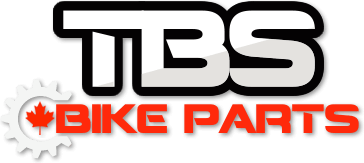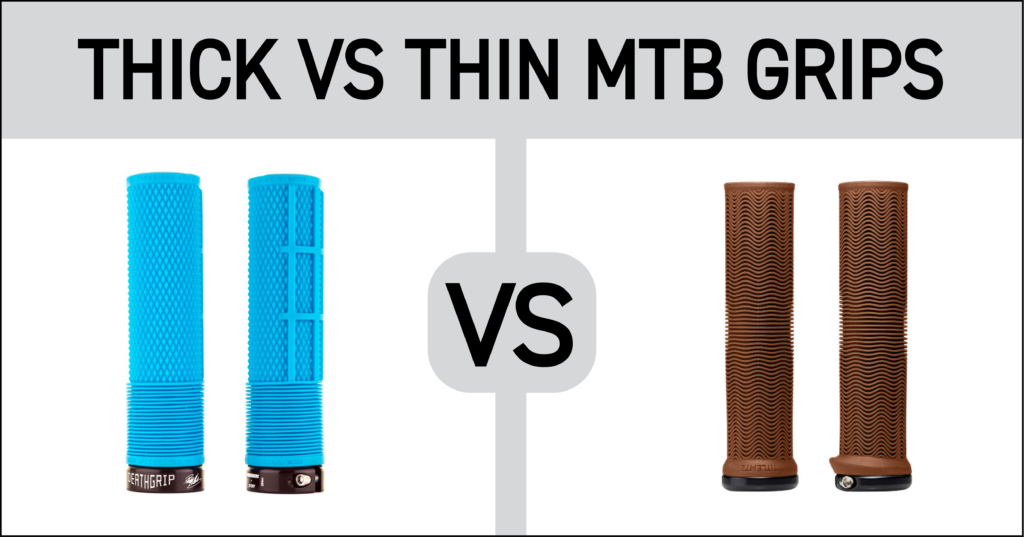Thick vs. Thin MTB Grips
Thick vs. Thin MTB Grips: Thick and thin mountain bike grips serve different purposes and cater to different preferences, so choosing between them depends on personal comfort, riding style, and hand size. Here's a breakdown of the advantages and disadvantages of both thin and thick mountain bike grips:
Thick Grip Advantages
Comfort: Thick grips offer more cushioning and padding, providing enhanced comfort and reducing hand fatigue, particularly during long rides or on rough terrain.
Shock Absorption: The additional material in thick grips helps absorb vibrations and impacts from the trail, providing a smoother and more comfortable riding experience. This can be particularly beneficial on bumpy or technical trails where vibrations are more pronounced.
Hand Support: Riders with larger hands or those who prefer a fuller grip may find thick grips more accommodating. The larger diameter of thick grips offers more surface area for the hands to grip, reducing pressure points and increasing overall comfort.
Durability: Thick grips often have a more robust construction, making them less prone to wear and tear over time. This can result in longer-lasting grips that maintain their performance and comfort through extended use.
Thick Grip Disadvantages
Reduced Feedback: Thick grips may dampen trail feedback, making it harder for riders to feel the terrain beneath them and potentially impacting their ability to react to changes in trail conditions.
Bulkiness: Thick grips take up more space on the handlebar, potentially limiting the placement of other components and accessories.
Weight: Due to their additional padding and material, thick grips are typically heavier than thin grips, which may be a concern for riders focused on minimizing overall bike weight.
Thin Grip Advantages
Direct Feel: Thin grips offer a more direct connection to the handlebar, providing enhanced control and feedback, which can be advantageous for technical riding.
Lightweight: Thin grips typically weigh less than their thicker counterparts, which can contribute to reducing the overall weight of the bike.
Precision: With less material between the hand and the handlebar, thin grips allow for finer adjustments, aiding in bike control and maneuverability.
Less Bulk: Thin grips take up less space on the handlebar, providing more room for accessories like shifters, brake levers, and dropper posts.
Minimal Vibration Dampening: While thin grips may transmit more trail feedback to the rider's hands compared to thicker grips, some riders prefer this direct feedback as it allows them to better gauge traction and trail conditions. This can be especially beneficial in situations where precise control and responsiveness are critical.
Thin Grip Disadvantages
Less Comfort: Thin grips provide less cushioning and shock absorption compared to thick grips, which may lead to increased hand fatigue, especially on longer rides or rough terrain.
Vibration Transfer: Due to their minimal padding, thin grips may transmit more vibration from the trail to the rider's hands, potentially causing discomfort or numbness.
Hand Fatigue: Riders with larger hands may find thin grips less comfortable, as they may not provide enough surface area to support the entire hand, leading to increased pressure points.
Ultimately, the choice between thick and thin grips comes down to personal preference and riding style. Some riders may prefer the comfort and cushioning of thick grips, while others prioritize the direct feel and control provided by thin grips. It's often a good idea to try out both types to see which feels more comfortable and suits your riding needs best.
If you are looking for grips we stock both thick and thin grips from Title MTB, PNW Components, ODI, DMR Bikes, SRAM, Ergon, and Lizard Skins. Shop our entire selection of grips here.
Remember that we offer free shipping on all orders over $149CAD. All orders are processed and shipped within 24 business hours.
Spend less and ride the best with TBS Bike Parts.
Related Articles
THREADED VS. PRESS FIT BOTTOM BRACKETS
FOLDING BEAD VS. WIRE BEAD MTB TIRES
ALUMINUM VS. CARBON MTB HANDLEBARS – ADVANTAGES & DISADVANTAGES

